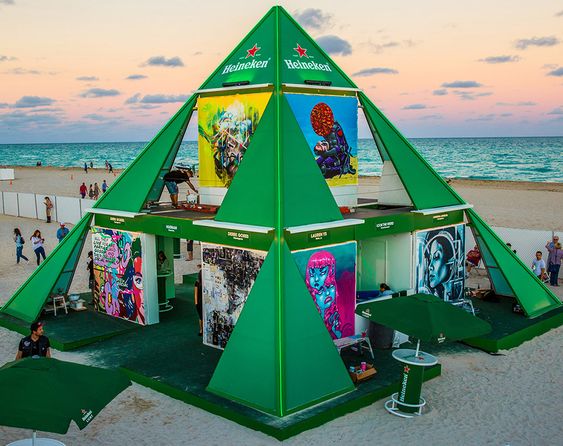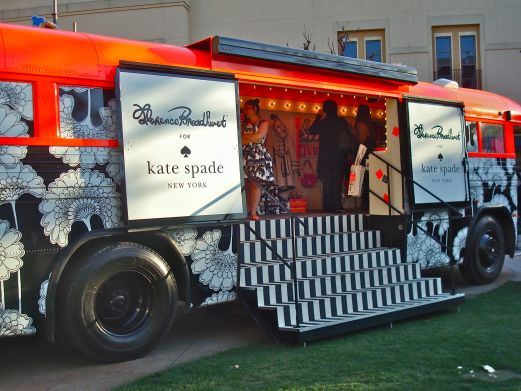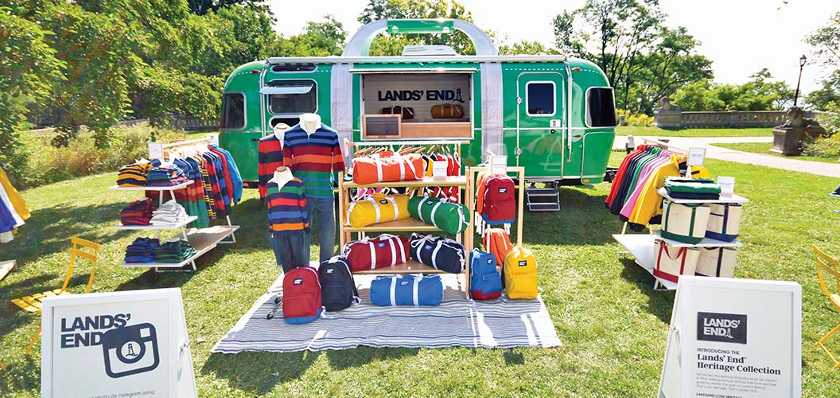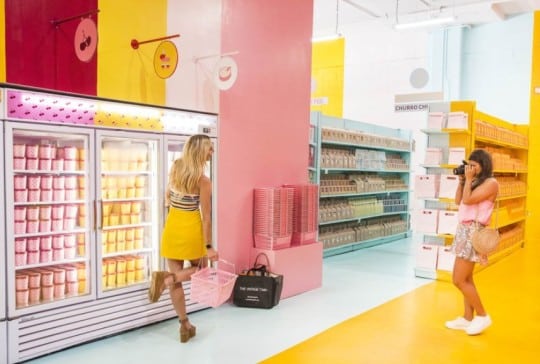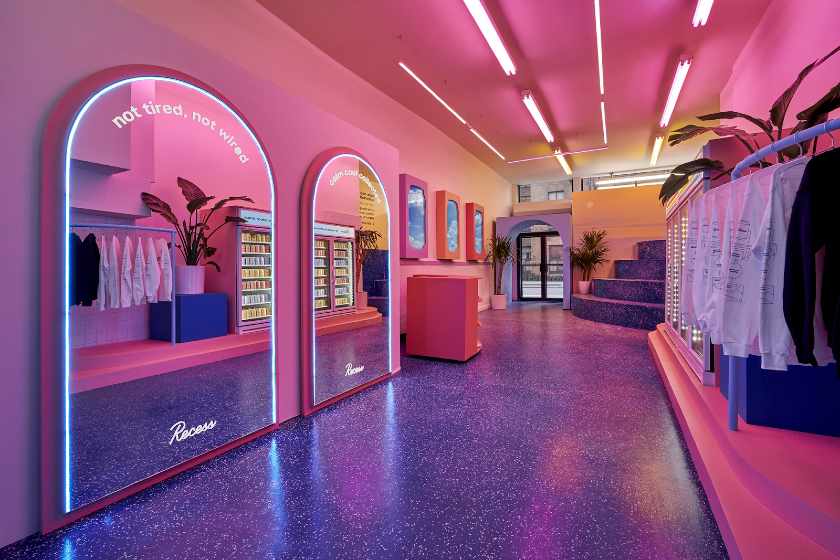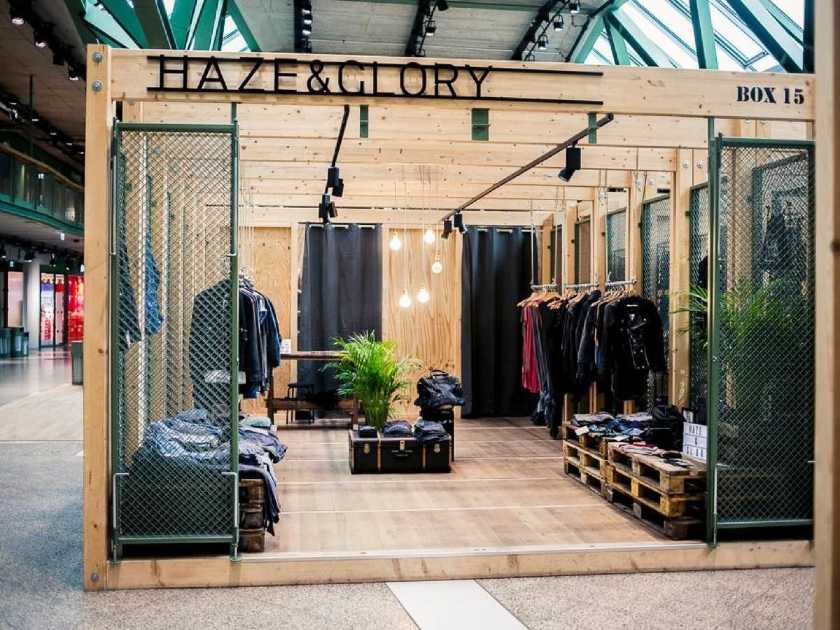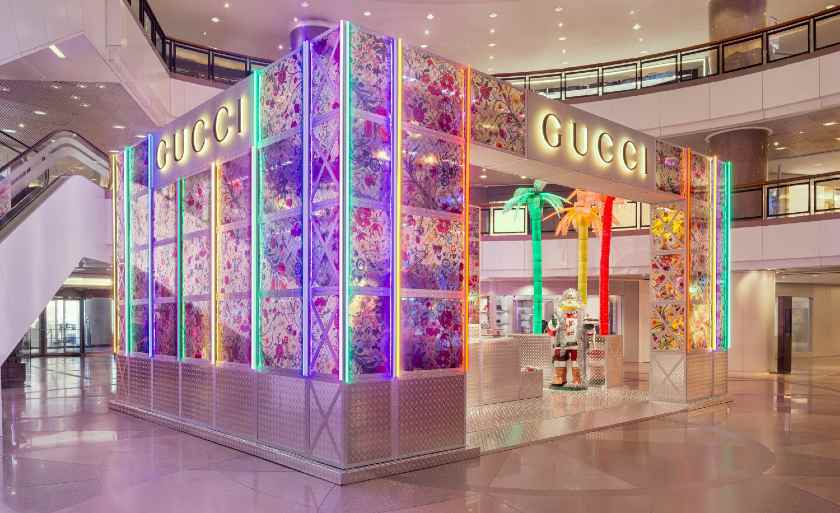Pop-up shops are temporary stores that use cutting-edge strategies to target customers. They offer many benefits, including the ability to test new markets or products, create deeper connections with customers, and introduce your brand to new audiences. Plus, as digital costs are rising, this experiential marketing strategy could be a cheaper way to get more business.
We’ve outlined more than 30 pop-up shop ideas to make your temporary retail activation an unforgettable customer experience and a sales driver for your business.
When setting up a pop-up store, you’d need a mobile point-of-sale (POS) system to accept payments. Square POS is our top choice for mobile POS apps. It features a free POS that comes fully kitted with all the basic tools, including an ecommerce site and low-cost, reliable payment processing. There are no contracts or monthly minimums, so you can create a free Square account and use it when needed.
Pop-up Shop Design Ideas
Similar to window displays, your pop-up store needs to be eye-catching from afar to attract shoppers. Consider any of the following pop-up store design ideas to bring in new and existing customers, highlight promotions, and enhance your brand image.
1. Lure Shoppers With Signage
The first of our pop-up store ideas is also connected to the first impression—your store sign. Use bold storefront signage to catch the eyes of passersby and draw attention to your pop-up.
Make sure the sign is easy to read and gives an accurate impression of your brand. The goal here is to maximize visibility, so you’ll also want to think about how people will see your shop when positioning your sign. For example, if you’re in a shopping center where people generally pass by in cars, you’d want to place your sign high up and make it large so people can see it as they drive by. Meanwhile, if it’s mostly foot traffic, then you might want to position it lower or even use a chalkboard sign or sidewalk art for added aesthetic impact.
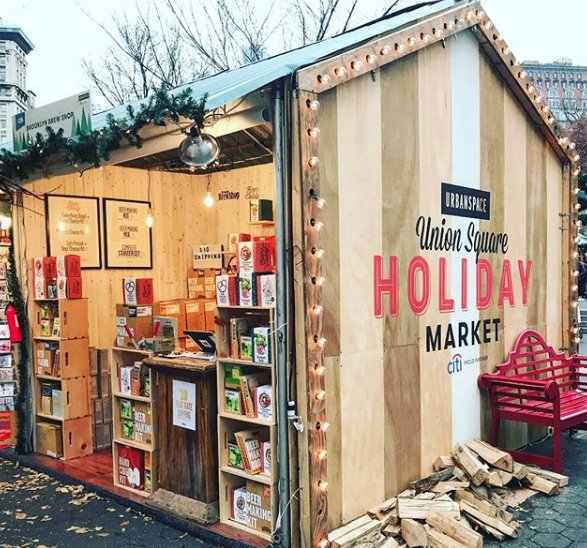
A side-facing sign to attract passing traffic. (Source: Twitter)
Tip: Step outside your store and put yourself in your shoppers’ shoes. Seeing what they see will help you position your storefront sign in the best spot.
2. Use Eye-popping Colors & Shapes
If you want to stay on brand and use your logo as your pop-up store’s signage, another way to make sure your shop stands out is to use bright colors and innovative shapes for your stall. As you can see from the examples below, using unique and fun colors and even designing your pop-up shop around a peculiar shape can help attract customers.
3. Design a Bold Layout
One of the best ways to draw attention to and keep shoppers in your pop-up shop is by implementing a bold store design. Bright colors and unique visuals will help attract shoppers to your space no matter where you set up and will make customers remember your brand.
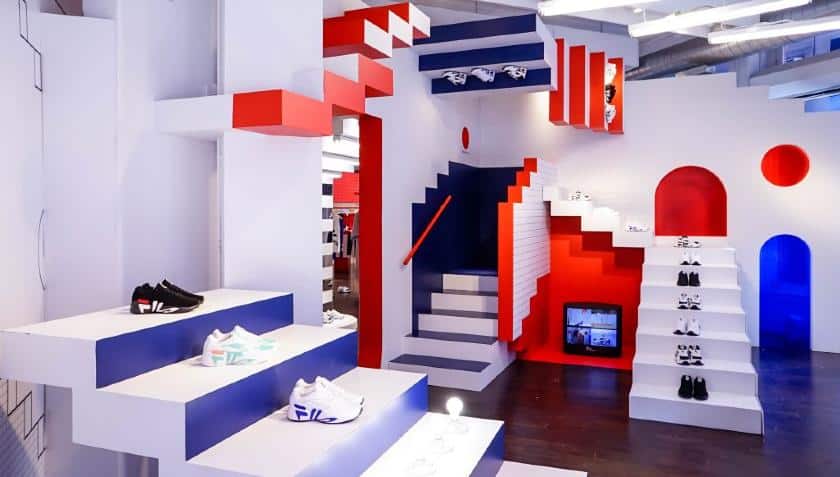
Fun shelves and bright colors create a visually exciting space. (Source: Pinterest)
RIPNDRIP also used bold design elements, like rolling turf floors, whimsical furniture and decor, and bold art, to turn what would have been a very ordinary showroom into something exciting and experiential.

RIPNDIP uses bold design to make its pop-up shop unforgettable. (Source: RIPNDIP)
4. Incorporate Art
Another way to enhance your pop-up store is by incorporating artwork. Work with a local artist and get an installation or use a print of something famous. Either way, adding art to your design is a great way to make your space more visually engaging and leave a strong impression on shoppers.
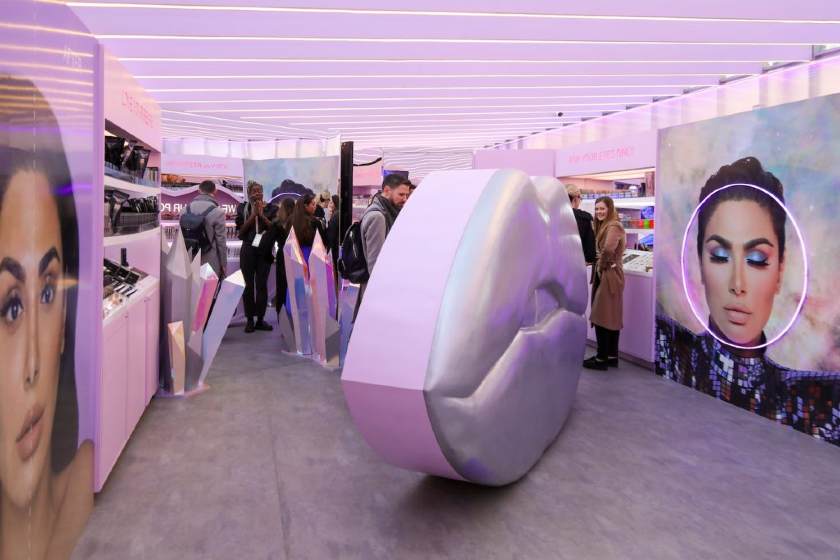
An art installation at this beauty pop-up creates a huge visual impact. (Source: LaptrinhX)
5. Think Outside the Box When It Comes to Your Space
Consider using a unique, innovative space as one of your pop-up shop setup ideas. More adventurous brands have used abandoned warehouses and many other interesting and engaging spaces for their pop-up shops.
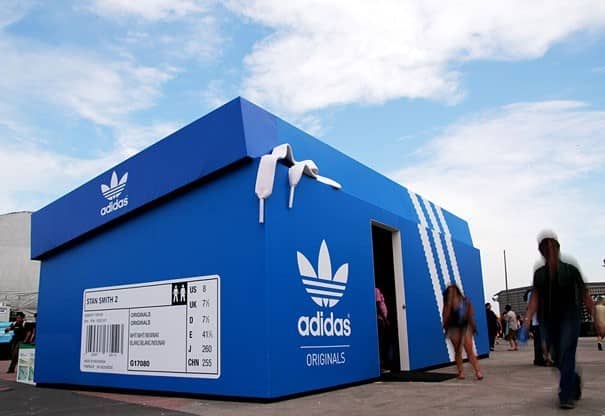
A shoebox-shaped structure is the perfect place to shop for sneakers. (Source: OpusFidelis)
Outdoor Pop-up Shop Ideas
Outdoor areas are common pop-up shop locations because they are easy (or easier) to set up and allow the most creative freedom. Some examples include waterfront, parks, urban spaces, and outdoor urban spaces.
6. Consider a Mobile Pop-up Shop
One of the biggest benefits of a pop-up shop is its flexibility. Besides semipermanent structures to pour your brand’s creative juices into, you can also take your store mobile with a moving pop-up shop setup. Take some inspiration from food truck businesses and convert an old van or truck into your in-person brand experience.
7. Commission an Artist to Paint a Mural
A mural is a great way to draw attention and foot traffic to your pop-up shop. Plus, you can give back to the community by supporting a local artist. This pop-up shop idea also creates a photo opportunity that shoppers will likely share on social media.
Take the small streetwear brand RIPNDIP, for example. Its building is painted a bright blue hue with a bold art installation to really catch passersby’s eyes.
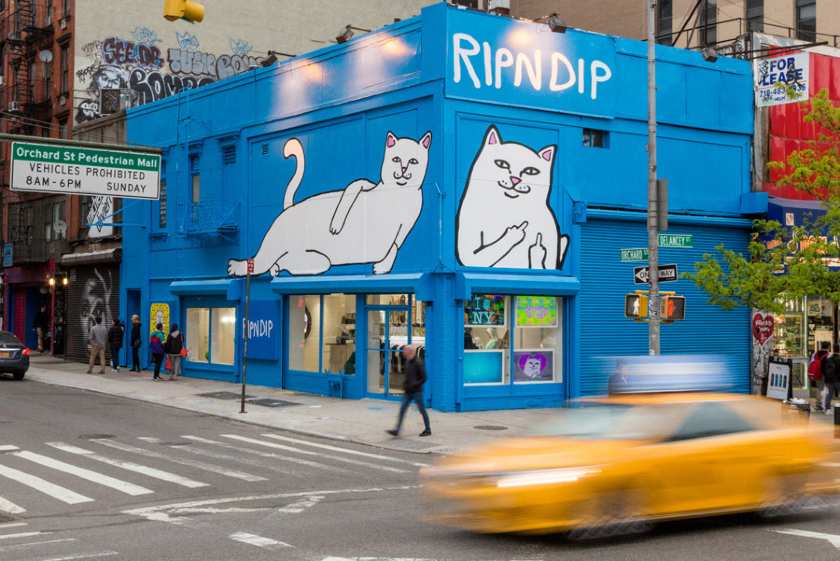
RIPNDIP utilized a bold mural on top of its standout color to make its building eye-catching. (Source: HYPEBAE)
8. Build a Pop-up Store in Event Grounds
Since pop-up shops are flexible when it comes to location, consider erecting your pop-up store next to an event. Foot traffic will be taken care of, and you get to expose your brand to different audiences. Just make sure that what you will be selling is somehow related or complementary to the nearby event.
For example, the pop-up store that event organizers did for K-pop group BTS during one of their concert tours. Instead of offering merchandise exclusively at the concert venues, they elected to have a pop-up store complete with a photo gallery, photo booth, and fan merchandise.
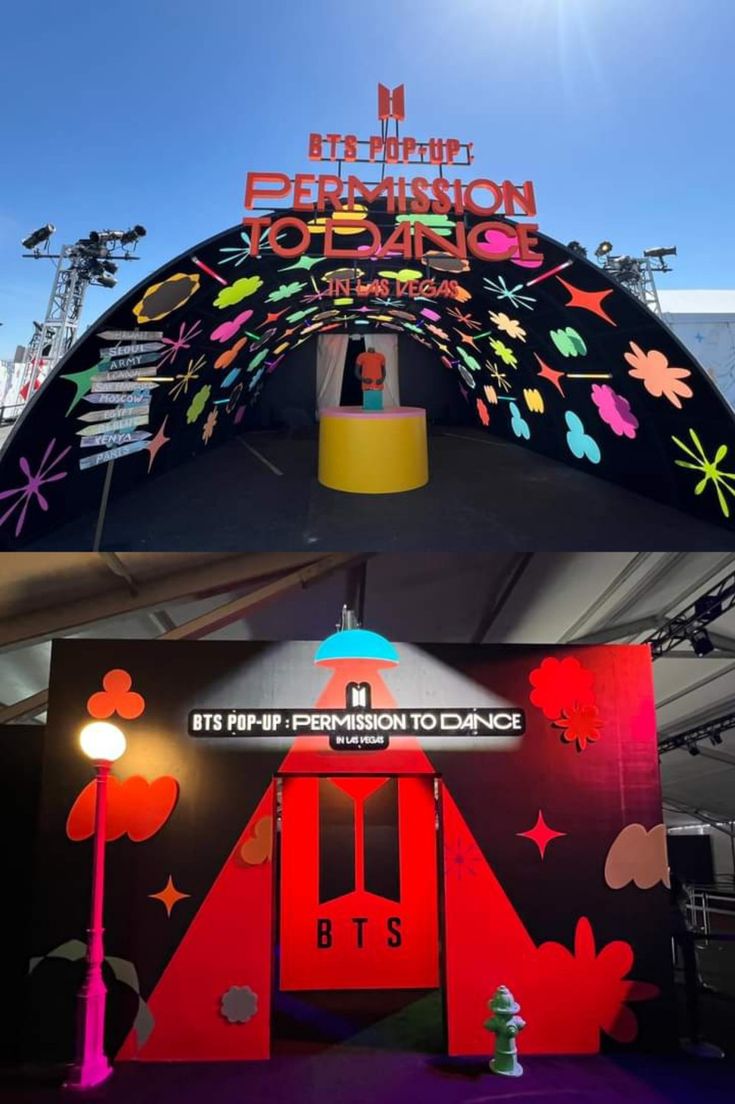
Marketing Event Pop-up Ideas
At their core, pop-up shops are a retail marketing strategy. They help you test new markets, expose your brand for awareness, and promote or launch new products. Use the following ideas in your next pop-up marketing campaign.
9. Offer Product Samples
Samples are free offerings that businesses provide to their customers, allowing them to try the product with no obligation to purchase. This reduces customer shopping anxiety and promotes impulse purchases.
In retail, the sampling conversion rate is around one in four. This demonstrates just how effective samples are as a sales strategy. You can also use this as a benchmark for your samples. If your conversion rate isn’t around 25%, it’s time to revisit your sampling strategy.
Typically, samples work best for food or beauty products. For example, a food store might sample its newest hot sauce flavor, or a beauty store might offer a mini lotion bottle.
Here are a few pointers for setting up successful sampling or demonstrations in your pop-up shop:
- Merchandise nearby: Merchandise the products you are sampling or demoing nearby so that customers can find them easily.
- Train your reps: Be sure that the person providing samples or demonstrating a product is well-trained to sell the products effectively and answer any customer questions.
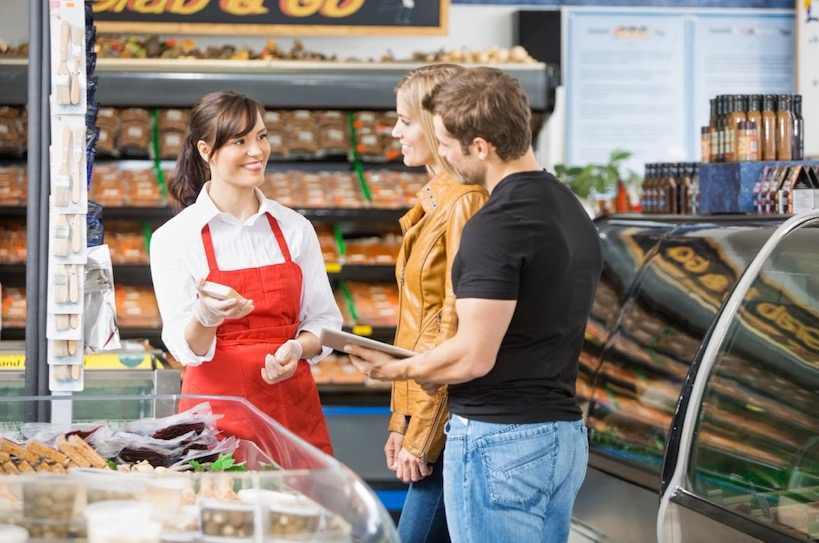
Samples and demonstrations are a great way to drive sales and increase engagement at your pop-up shop. (Source: Nina Cherie Franklin)
10. Create Photo-ops
Having the perfect photo-op spot is a huge draw for modern shoppers. Install a mural, photo booth, living wall, fun sign, or any other “Instagramable” design feature to increase your foot traffic and promote interaction with your brand. However, consider your target audience and whether creating a photo-op would bring in the customer base you’re actually seeking to attract.
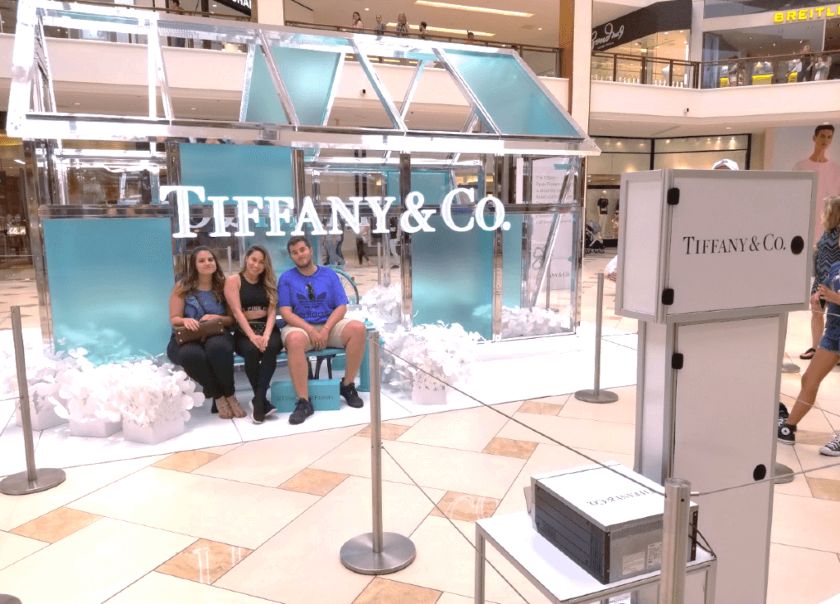
Photo booths are a great way to attract customers to your shop. (Source: Fonteco Photo Booth Rental)
Be sure your photo area is well lit, reflects your brand, and has enough space for customers to take their shots. If you have a larger space, consider putting your photo area toward the back. This will force people to walk through your entire space and see all your offerings before they reach their destination. Display your social media handles and hashtags in or near the photo-op spot so that customers can easily find you online and you can share posts you are tagged in.
11. Host a Special Event
Consider hosting an event at your pop-up shop. Special events add excitement to your pop-up store ideas and attract foot traffic.
Retail expert Brigitte Hodge shared that at her store, for example, they would host “Sip and Shop” events where they would stay open past regular hours and have wine, snacks, and new products for customers to shop. Without fail, the festive environment would get people shopping—and the fun and unique experience would create a positive and lasting impression of the brand.
You will want to plan an event that will appeal to your target market and speak to your brand. Brigitte’s store had a large customer base from the salons and offices around her shop. To make it easy for them to make it to the store’s events, they scheduled the Sip and Shop when their target customers were getting off work. They also hand-delivered flyers to area stores so neighbors knew about the event.
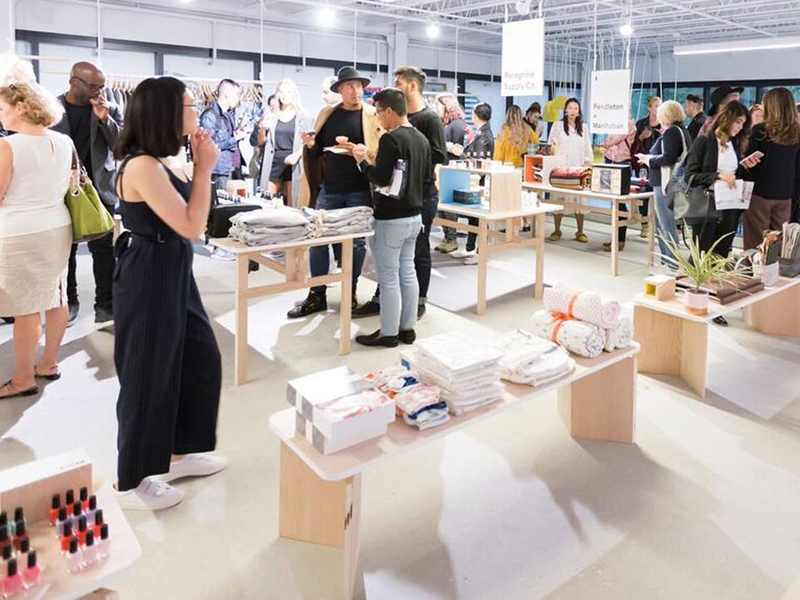
Events give new customers an excuse to shop and create a good brand impression. (Source: Style Democracy)
12. Bring in a Product Expert
You can invite a product expert or a special guest to your pop-up store to boost customer engagement and showcase product demos at the same time. Product experts are individuals with expertise in a product area, and you can invite them to your shop to give advice and show customers how to use your merchandise.
This is an especially effective strategy if you have merchandise like tools, ingredients, parts, or technical items because they can make your products less intimidating and help customers imagine themselves using your pieces themselves.
For example, if you sell cooking supplies, you could bring in a product expert for your pasta machine who can show customers how to use it. This expert advice and presentation will help customers feel more at home with a technical cooking device and visualize it in their lives.
Tip: Don’t forget to tell people about the expert and their visit to your store. Advertise their expertise and background to build customer trust and prove their value.
13. Feature New or Exclusive Products
You can make your pop-up shop even more enticing by offering new or exclusive items. This will create excitement around your retail activation and further incentivize people to visit. That’s what sustainable fashion brand Kula does for its pop-up events.
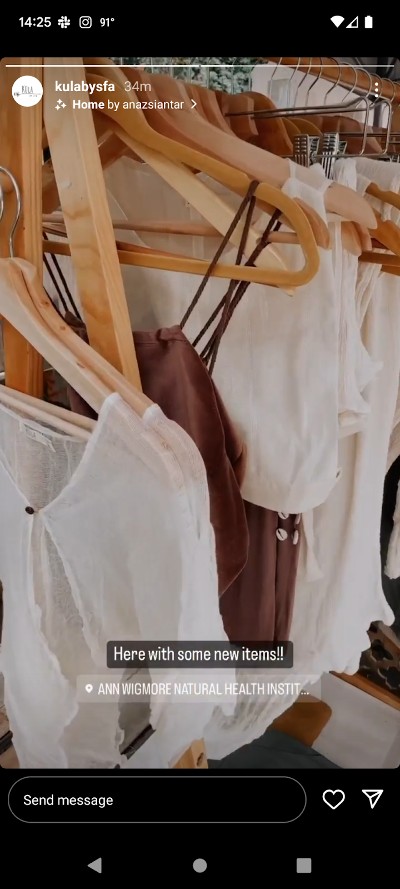
Kula showcases some of its newest pieces at its pop-up store and advertises them on Instagram. (Source: Instagram Stories)
Offering an exclusive item is especially effective if your brand has an online store or permanent brick-and-mortar location—you can create hype among your existing customer base and encourage them to visit your pop-up.
For example, an ecommerce hair care brand might offer a pop-up shop-exclusive scent or bottle. You can easily schedule exclusive product drops on a basic Square Online plan ($29 monthly with lump sum billing). You can facilitate item-specific discounts and product launches (like flash sales).
Another great way to drum up excitement around a new product is to do a spinoff of a bestseller. Additionally, you can showcase new, never-before-seen products or exclusive seasonal items. For example, a candle shop might offer an exclusive Christmas tree scent around the holidays, or a clothing brand might offer a trendy color of their bestselling tee.
Experiential Pop-up Shop Ideas
A pop-up shop that creates a memorable shopping experience for customers can help generate buzz and engagement around your brand. This concept is ideal for fashion, home decor, tech, and tourism retailers.
14. Hold Product Demos
Product demonstrations show customers how to use a product and are great for businesses that offer products that have interesting features or require manual manipulation. For example, you might use a demonstration at an outdoor store to show all the features of a fishing rod or to demonstrate how to set up a tent.
15. Host a Workshop
Shoppers expect pop-ups to be a unique retail experience—an engaging and unique event. To capitalize on that expectation and incorporate interactivity at the same time, try setting up a workshop.
TIP: Make this easier by offering tickets to the workshop online, which you can easily set up with a free Square Online store. You can even limit who can request tickets based on your shipping location (although you wouldn’t need to technically ship anything). Once they request, they just get an email confirmation which they can use as ticket proof for your event. Learn how to set up a free Square Online store.
Brika and Oxford Properties collaborated on a “novel curated concept store” at a local mall. The pop-up shop ideas were complete with a bakery/cafe and a dedicated workshop where they hosted six activities for shoppers.
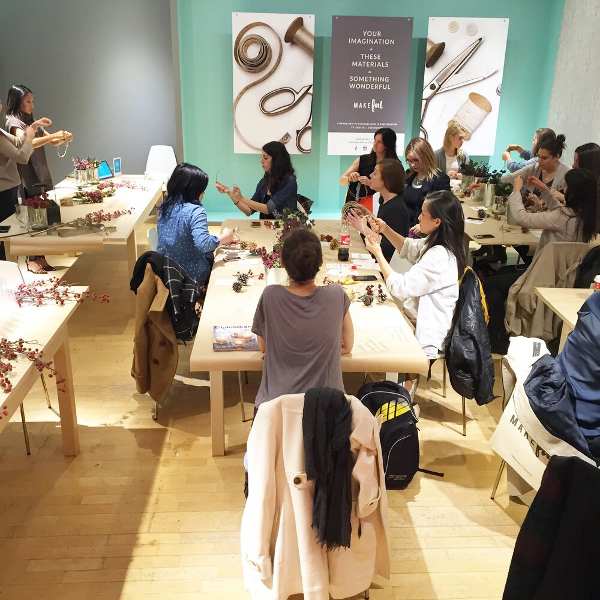
Separate retail and workshop spaces allow for shopping to flow even during events. (Image: Brika)
16. Capitalize on Virtual Reality (VR) Experiences
Using virtual reality, you can stage demonstrations and live shows on VR devices. With this, customers get a chance to experience a complete shopping experience. For example, shoppers can use augmented reality (AR) from their smartphones to try products before buying.
Allow shoppers to virtually try on clothes, explore a new location, or interact with a product.
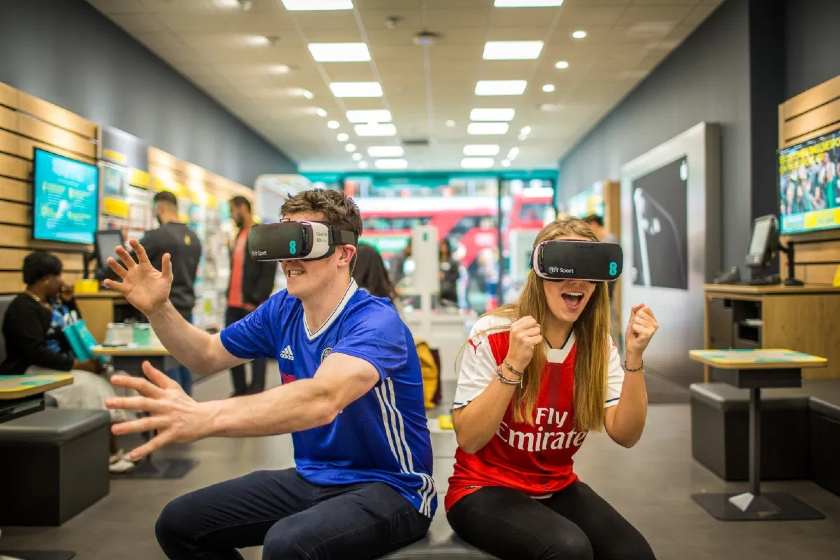
Shoppers use a VR headset to watch a sports game. (Caption: Broadband TV News)
17. Leverage the Power of Social Media
With more than 4.7 billion people on social media worldwide, it’s critical to have an effective social media strategy that helps you reach your audience and expand your customer base. Consumers tend to learn about new brands and even find upcoming local events via social media.
When using social media for your pop-up shop, do the following:
- Create a branded hashtag for the event and encourage people to share their experiences with that hashtag—include it on store signage, displays, printed materials, and digital promotions.
- Set up a Facebook and Instagram event so people can RSVP—this will give you an estimate of how many people might show up, plus it will send notifications to remind people to come.
- Tease your pop-up shop about a month before the event, increasing the frequency the closer you get to the date.
- Livestream from your pop-up shop to show other people what they’re missing and encourage people to attend this or future pop-ups.
Keep your profiles updated with your newest products, events, and any other information you think would intrigue customers and get them shopping. Your social media outlets are a great way to give your brand a personality and to show how your products can look in the real world.
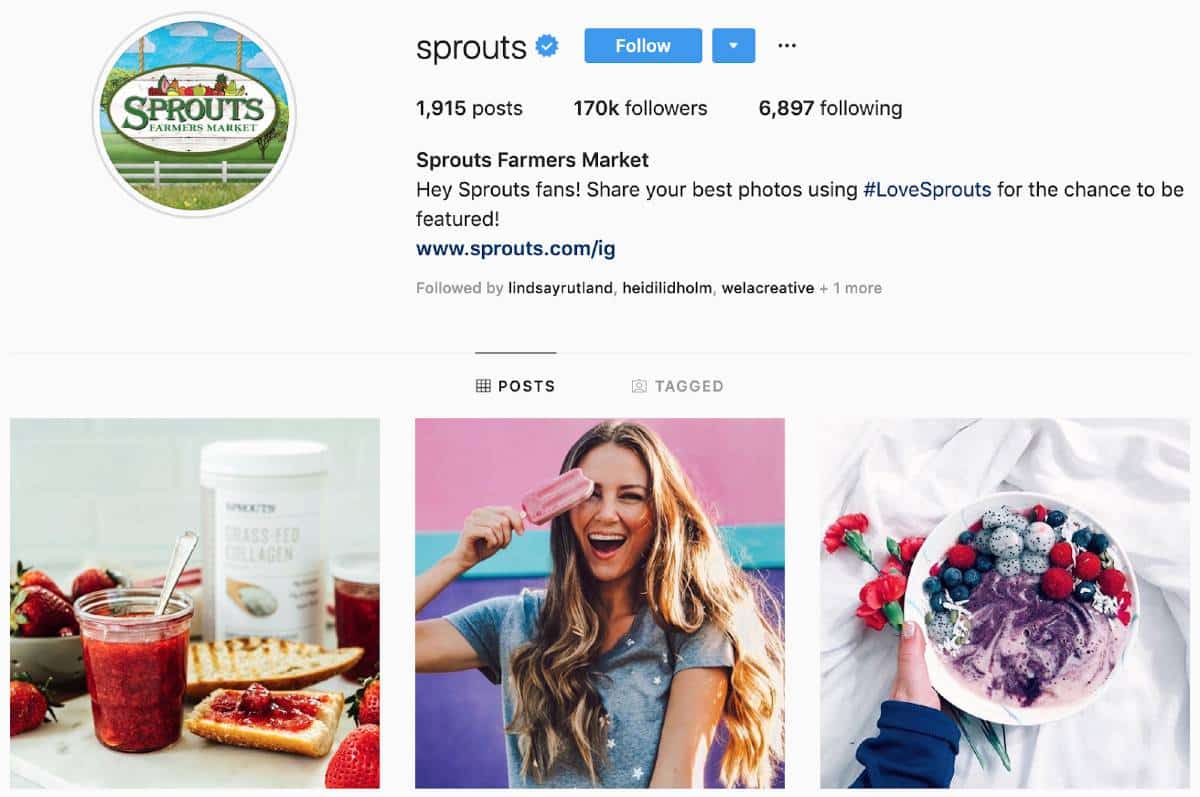
This grocer uses Instagram to show shoppers just how much fun their product can be. (source: Sprout Social)
18. Invite Influencers
Influencer marketing is a $16+ billion dollar industry with plenty of opportunity for businesses of all types and sizes. Working with influencers will put your brand in front of new target audiences. They can also create high-quality content for your brand.
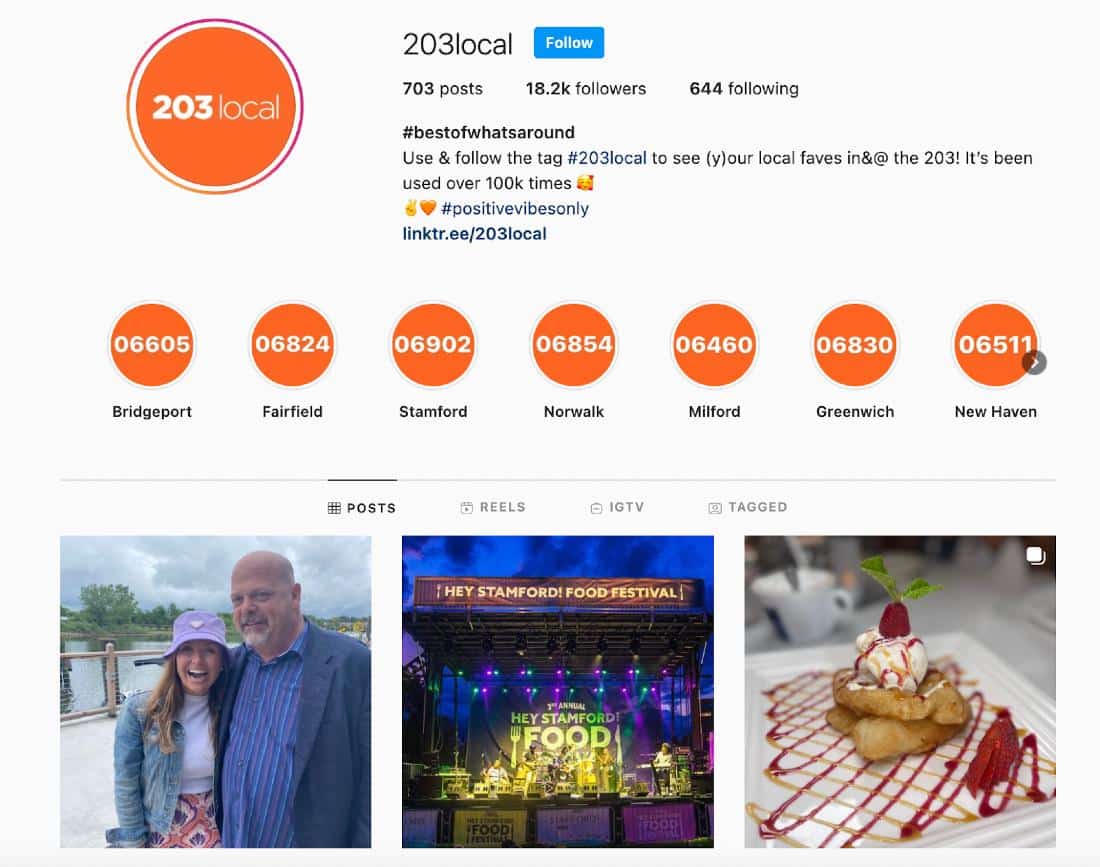
Leverage the networks of local influencers, such as this Connecticut-based Instagram influencer, to advertise your pop-up shop.
(Source: 203local)
Curate a list of local influencers who fit your target and send them a personalized invitation to your event. Send them a small gift or free product, and consider offering them a discount code to share with their online followers after the pop-up.
19. Capture Content During the Event
The top marketing challenge for small businesses is the ability to focus on marketing, and that includes creating content. You can (and should!) use your pop-up store as an opportunity to curate content for future marketing needs.
You don’t need to post live from your pop-up shop. In fact, you can capture the content—or hire someone else to—and then curate it later. That’s exactly what The ReWoven Shop did for its first pop-up shop event, sharing a reel to its Instagram after the fact. This will encourage people to follow the page and check out future pop-ups so they don’t miss out.
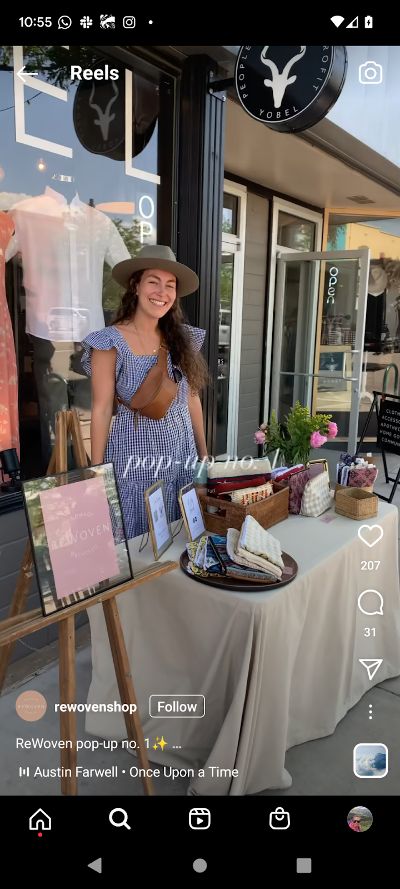
Advertise your pop-up shop by leveraging live stories, reels, and other video streaming events on social media. (Source: Instagram)
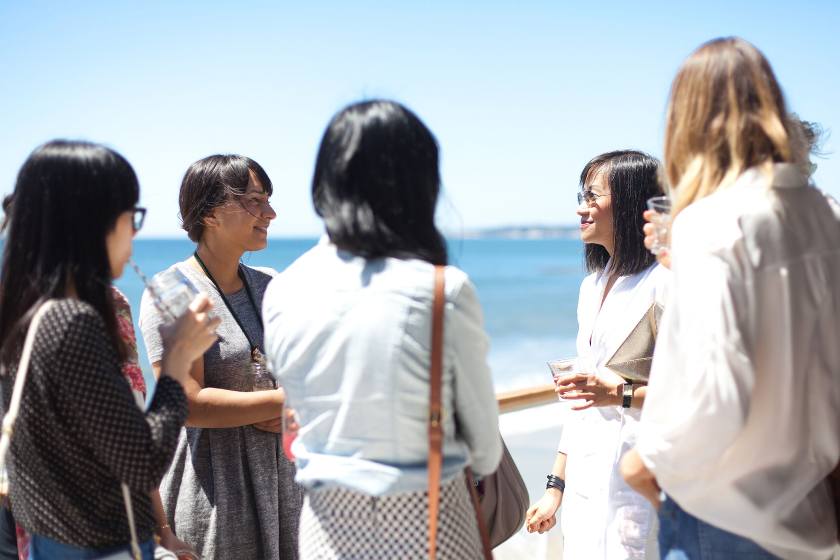
You could even consider creating an influencer-only day for your pop-up, allowing them to network with each other. (Source: Brika)
One way to market a recent event is to give your followers a chance to grab what was offered during the pop-up. For example, you can tag products featured in your photos and videos and link them to your online shop so they can buy. Want to make it easier? Let them buy directly from your social channel. Ecommerce platforms like Square Online have built-in integrations with TikTok and Instagram to make social selling easy.
Seasonal Pop-ups
Aside from marketing events from your store, hosting a pop-up store based on seasonal events is a great way to increase sales. Seasonal pop-ups are temporary and short term, making it the least expensive option from the types of pop-ups available.
20. Take Advantage of the Holidays
The National Retail Federation points to the winter holiday season as when consumers spend the most, so it is obviously big for many retailers as well. Consider opening a pop-up shop during this season, ideally between Halloween and Thanksgiving, when most consumers begin holiday shopping.
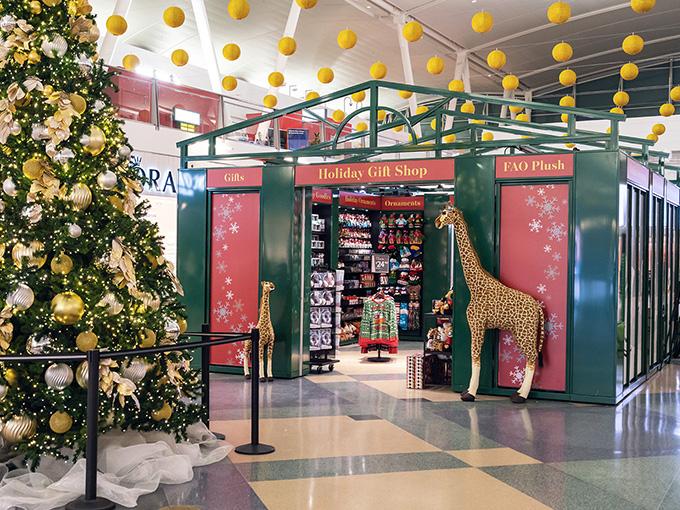
Get shoppers into the holiday spirit by doing a holiday-themed pop-up. (Source: OPTO)
TIP: Give your store a holiday-themed design or even bundle your products into gift sets to motivate buyers to purchase.
Chicago’s Christkindlmarket is a great example of a holiday pop-up shop. Between mid-November through the end of each year, it provides an interactive holiday event with locally made goods from many vendors.
21. Get Inspired by Seasonal Events
Take advantage of the impermanence of your pop-up shop and get seasonal. Go by season or event, such as back-to-school, spring fever, or the Super Bowl.
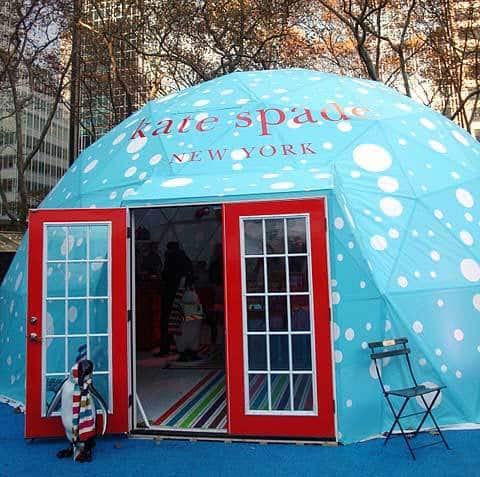
A themed igloo pop-up shop for the winter season. (Source: Planetizen)
22. Support a Cause
Pop-up shops can be fundraising outlets, too. As retailers, consider adopting a cause or have a pop-up shop with a social benefit. It’s a good way to connect with potential brand advocates.
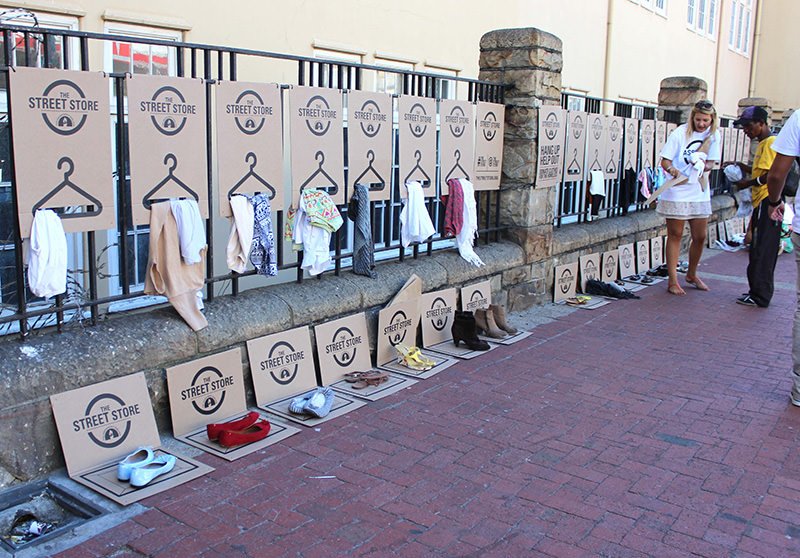
The Street Store advocacy helps homeless people “shop” for clothes with dignity. Gently-used clothes are hung up for sale and customers are welcome to choose any item for free.
Experimental Pop-up Ideas
Pop-up shops benefit experienced retailers and artisans alike. For established retailers, pop-up shops allow them to test new locations, bring more traffic to their main stores, and boost omnichannel retailing. For independent manufacturers and creatives, pop-up stores help expose their products to the world. Pop-up partnerships, in particular, can be very lucrative.
23. Host Virtual Pop-ups
Take your pop-up shop online! Virtual pop-ups, similar to its in-person counterparts, are temporary online stores typically selling limited-edition items. These temporary online stores can be an ecommerce website or hosted on social media using livestreaming.
If you sell primarily in-person, virtual pop-ups can help you dip your toes into ecommerce to find out if it’s a good fit, but existing online stores would also find these ideas helpful.
You can also use social media to hold live events where you can interact with customers online, answer their questions, and showcase your products. Or, hold an online livestream shopping event on Instagram or TikTok where people can shop virtually and make real-time purchases as you stream.
24. Continue Your Shop Online
It’s important you support your physical retail marketing campaign with your online efforts. If you don’t have one yet, create a website. A website will help you capitalize on the expanded customer base that pop-ups create.
Your website is a place where people can learn about your brand, find out about your pop-up events, and ideally purchase your products. Add ecommerce to your site so people can continue shopping for your products after the fact. Maybe they tried an item at your pop-up but weren’t ready to purchase yet—they can do so at a later date via your online store.
Tip: If you’re not ready to create your own website, then try selling your products on established ecommerce marketplace like Etsy. Check out our guide on how to sell on Etsy.
25. Collaborate With Other Businesses
Access a broader customer base and bring more shoppers to your pop-up by collaborating with other businesses. Collaborations expose your brand to new customers, and you can also share some of the responsibility with a partner for your pop-up.

A clothing store collaborates with Glossier, a trendy beauty brand.
(Source: Surface and Panel)
Remember to be strategic with your partnerships. You want to work with businesses that are in line with—but not directly competitive to—yours. For example, a women’s clothing boutique might want to partner with an eyelash bar but probably wouldn’t benefit from working with a fishing supply store or another women’s clothing store.
Tip: Make your collaboration into an event. Bring differing businesses together under one roof for a celebratory shopping experience that will draw lots of customers in and increase sales.
26. Create a Pop-up Fulfillment Center
Many consumers and retail businesses alike are adopting click and collect, or buy online and pick up in store (BOPIS), habits. According to BOPIS statistics, more than half of consumers plan to “frequently” use BOPIS over the next year. It’s a popular and innovative way to conduct multichannel business.
Given that, doubling your pop-up shop as an in-person fulfillment center provides a great opportunity for you. This gives you the chance to personally thank customers for their support, as well as provide a closer connection with your brand.
This pop-up store idea is great for retail businesses that primarily sell online. For example, you can open a pop-up fulfillment center in a location where you receive a lot of online orders to help reduce shipping costs. Or, you could pop up somewhere you don’t receive many online orders and give people in those locations an extra reason to purchase from you.
27. Offer a Shipping Service
Another way you can positively impact customers and improve their experience is by flipping the idea of BOPIS on its head and offering ship-from-store services. By offering an alternative for customers who can’t take their purchase with them that day or carry it around, you’ll create more buying incentives and a positive impression of your brand.
Tip: Consider how easy it is to transport and take your product home. Living or large items, like plants or furniture, can be difficult.
Since pop-up shops attract local customers, you can set up a delivery request form where customers can leave their information and a delivery window that works with their schedules. Then, you can arrange for a local delivery service to send out your parcels in batches that match the expected delivery times.
One thing to consider is your shipping costs. If you can, offer free shipping—it can be quite enticing for consumers when handled properly. If that’s not feasible, maybe you can offer free or discounted shipping with a minimum purchase amount.
28. Provide Complementary (and Complimentary) Services
A complementary service is an extra service or product you provide to show customers how they can best use your merchandise. For instance, a dietary supplements and weight loss brand could offer “smart scales” that tell customers about their body fat percentage, water weight, and muscle mass.
These kinds of services will make it easier for customers to imagine using your merchandise and get them engaged with your brand. Typically, these services are free and have no purchase obligations attached.
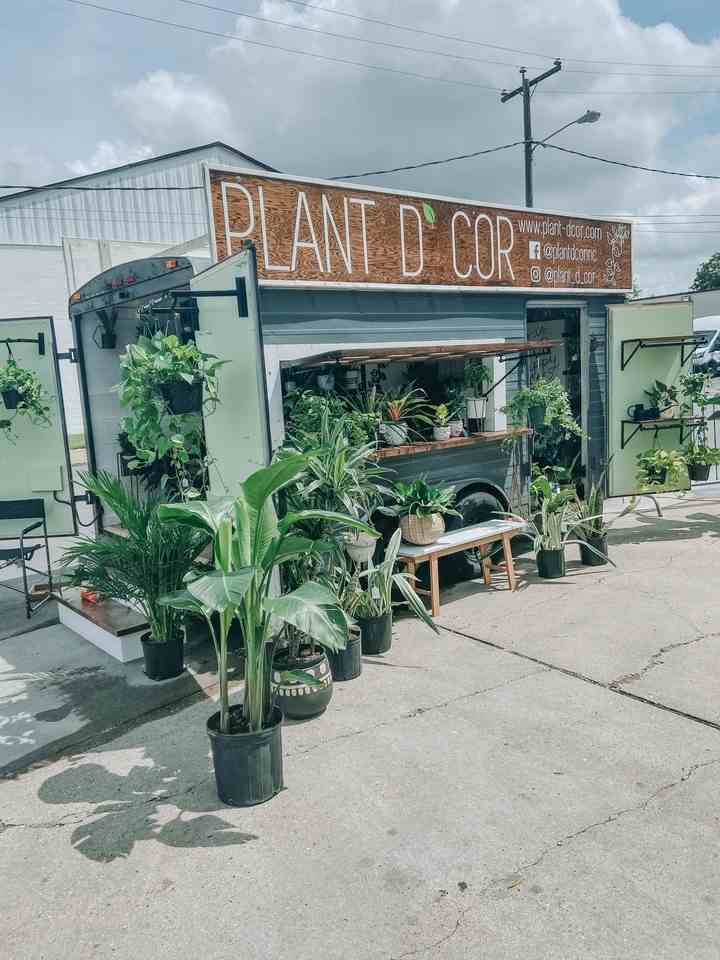
This pop-up shop offers a soil reading service that tells people about the health of their plants and the products they need to get them back to their best. (Source: Plant D’Cor)
29. Join Existing Pop-ups
Many markets and even pop-up collectives are already built to host brands. These options are great because they’re turnkey, and you might even have some support from people with extensive experience with pop-up store ideas.
Online vintage and handmade clothing brand Peppy Debs frequently participates in pop-up shops at existing markets and events. This one was with Makers Market, based in Asbury, New Jersey.
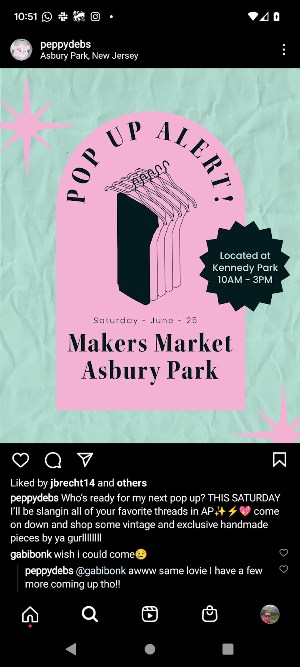
Peppydebs joins pop-up collectives to showcase and sell some of their pieces. (Source: Instagram)
Pop-in Store Ideas
Another pop-up shop idea is to open a pop-up within an established store, usually called a pop-in store. Launching this type of pop-up leverages the existing shopping traffic of the larger store and helps you save money on overhead expenses.
30. Launch a Pop-up in a Mall
Though shopping malls were once deemed “dead,” they’re actually making a comeback. Foot traffic in shopping malls is now 5% higher than pre-COVID, and some experts believe this upward trajectory will continue.
That’s why malls are viable pop-up shop setup ideas. Businesses can take advantage of the foot traffic as well as the amenities the space has to offer. Shopping malls are retail-ready, so you’ll have everything you need, from parking for shoppers to lighting and outlets, and everything in between!
31. Set up a Store within a Store
You have two options when setting up a store within a store—you can host a brand in your store or set up your shop within another shop. Similar to launching pop-ups in malls, it is best to partner with complimentary brands, instead of competing ones. Your target audience is the same, making it easy for you to close sales.
A great example of this is home decor retailer West Elm. Its program, West Elm Local, invites local business owners to set up pop-up shops in their stores on weekends and gives them a chance to potentially expand their customer base.
Pop-up Shop Ideas Frequently Asked Questions (FAQS)
Pop-up shops make money from sales. Since they are temporary, less expensive than your standard brick-and mortar, and intimate, pop-up shops are a great way to make extra sales.
You can make your pop-up stand out by employing eye-catching signage, a bold store layout, and innovative design elements and picking a great location.
Pop-up shop costs depend on the size, duration, and location of your temporary retail store. You could spend as little as $2,000 for a short-term pop-up shop.
You can sell anything at a pop-up shop. Ideally, your products should be non-perishable and small enough to be transferred easily.
Bottom Line
According to Retail Dive, three-fourths of retail sales will continue to happen offline until 2024. As such, pop-up shops are an increasingly relevant retail strategy as customers become reacquainted with in-person shopping after COVID-19’s initial impact. Opening a pop-up shop for small businesses is a great tool to increase customer reach, drive sales, and improve brand recognition.
At their core, successful pop-up stores are about creating a good experience between your brand and the customer. Part of giving a good customer experience is conveniently accepting payments. A good mobile POS is essential in pop-up stores. Square is a highly rated POS among experts and retailers alike. Sign up for a free account today.
